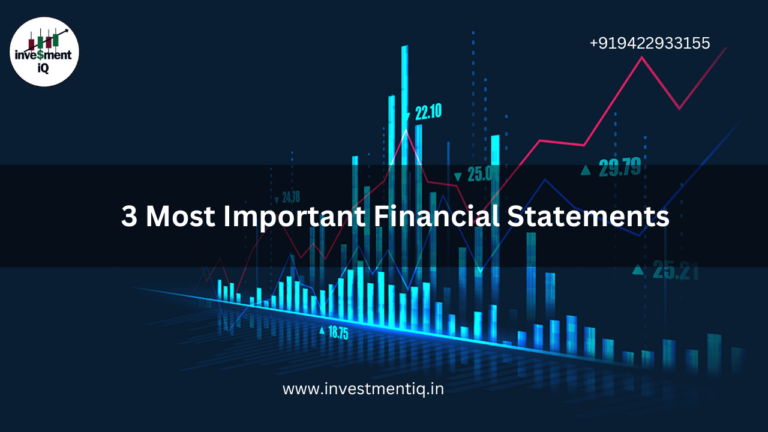General Steps to Fundamental Evaluation
Even though there is no clear-cut method, a breakdown is presented below in the order an investor might proceed. This method employs a top-down approach that starts with the overall economy and works down from industry groups to specific companies.
It’s crucial to keep in mind that all information is relative when doing analysis. Companies are compared to other companies, and industry groups are compared to other industry groups. Typically, businesses are contrasted with those in the same category .For instance, rather than an oil business like Chevron Corp. (CVX), a telecom operator like Verizon Communications (VZ) might be compared to another telecom operator like AT&T, Inc. (T).
Economic Forecast
An holistic assessment of the broader economy would be the first step in a top-down investment strategy Consider the different industrial groups and individual businesses as boats, and the economy as the tide The majority of industrial groups and businesses gain and expand when the economy grows. The majority of industries and businesses typically suffer as the economy shrinks.
Many economists link economic expansion and contraction to the level of interest rates. Interest rates are seen as a leading indicator for the stock market.
Below is a chart of the S&P 500 ($SPX) and the yield on the 10-year note over the last 30 years. Although not exact, there’s a correlation between stock prices and interest rates.

Fundamental Analysis example chart from StockCharts.com
When you have identified whether the overall economy is expanding or contracting, the next step would be to break down the economy into its various industry groups.
Group Selection
If the prognosis is for an expanding economy, then certain groups are likely to benefit more than others. An investor can narrow the field to those groups best suited to benefit from the current or future economic environment. If most companies are expected to benefit from an expansion, then risk in equities would be relatively low and an aggressive growth-oriented strategy might be advisable. A growth strategy might involve the purchase of technology, biotech, semiconductor, and cyclical stocks.
If the economy is forecast to contract, an investor may opt for a more conservative strategy and seek out stable income-oriented companies. A defensive strategy might involve the purchase of consumer staples, utilities, and energy-related stocks.
An investor would want to take into account the overall growth rate, market size, and significance to the economy of an industry group when evaluating its potential. While the individual company is still important, its industry group is likely to exert just as much, or more, influence on the stock price. There are very few lone guns out there; stocks typically move in groups. Many times it is more important to be in the right industry than in the right stock!
The chart below shows that relative performance of five sectors over a seven-month timeframe. As the chart illustrates, being in the right sector can make all the difference.

Sector Selection example chart from StockCharts.com
Narrow Within the Group
Once the industry group is chosen, an investor would need to narrow the list of companies before proceeding to a more detailed analysis. Investors are usually interested in finding the leaders and the innovators within a group.
The first task is to identify the current business and competitive environment within a group and future trends. How do the businesses stack up in terms of market share, product position, and advantage over competitors? Who is the current leader, and how will changes within the sector affect the current balance of power? What are the barriers to entry? Success depends on having an edge, be it marketing, technology, market share, or innovation. A comparative analysis of the competition within a sector will help identify those companies with an edge and those most likely to keep it.
Learn in details about technical Analysis; here is our series about technical Analysis
Company Analysis
With a shortlist of companies, an investor might analyze the resources and capabilities within each company to identify companies capable of creating and maintaining a competitive advantage. The analysis could focus on selecting companies with a sensible business plan, solid management, and sound financials.
Business Plan
The business plan, model, or concept forms the bedrock upon which all else is built. If the plan, model, or concepts are subpar, a business lacks hope. For a new business, you may want to look for answers to questions like: Does its business make sense? Is it feasible? Is there a market? Can a profit be made?
For an established business, the questions may be: Is the company’s direction clearly defined? Is the company a leader in the market? Can the company maintain leadership?
Management
To execute a business plan, a company requires top-quality management. Investors might look at management to assess their capabilities, strengths, and weaknesses. Even the best-laid plans in the most dynamic industries can go to waste with bad management. Alternatively, even in a mature industry, strong management can make for increased success. Some of the questions to ask might include: How talented is the management team? Do they have a successful past? How long have they worked together? Can management deliver on its promises? Sometimes it is best to move on from management issues.
Financial Analysis
The final step in this analysis process would be to take apart the financial statements and devise a valuation method. Below is a list of potential inputs into a financial analysis.
Accounts Payable Accounts Receivable Acid Ratio Amortization Assets – Current Assets – Fixed Book Value Brand Business Cycle Business Idea Business Model Business Plan Capital Expenses Cash Flow Cash on hand Current Ratio Customer Relationships Days Payable Days Receivable Debt Debt Structure Debt:Equity Ratio Depreciation Derivatives-Hedging Discounted Cash Flow Dividend Dividend Cover Earnings EBITDA Economic Growth Equity Equity Risk Premium Expenses
Good Will Gross Profit Margin Growth Industry Interest Cover International Investment Liabilities – Current Liabilities – Long-term Management Market Growth Market Share Net Profit Margin Pageview Growth Pageviews Patents Price/Book Value Price/Earnings PEG Price/Sales Product Product Placement Regulations R & D Revenues Sector Stock Options Strategy Subscriber Growth Subscribers Supplier Relationships Taxes Trademarks Weighted Average Cost of Capital
The list may appear overwhelming and lengthy. However, an investor will eventually build a set of favorite analysis tools and discover what works well. The industry and economic cycle stage have a significant impact on the various valuation measures. To predict future sales, expenses, and profits,a comprehensive financial model can be constructed. Alternatively, an investor can use multiples to arrive at a valuation or rely on the projection of other analysts. Dividing the stock price by a significant value driver yields some of the more widely used ratios.
This approach makes the assumption that a business will sell for a certain multiple of its growth, earnings, or revenues. These value ratios can be used by an investor to rank firms. While those at the low end can represent rather excellent value, those at the high end might be viewed as overpriced.
Putting it All Together
An investor will ultimately be left with a small number of businesses that are very noteworthy. An awareness of which businesses stand out as prospective leaders and innovators will emerge during the study process. Other businesses would also be viewed as unreliable and laggards. Combining all of the information, analysis, and knowledge to choose a single stock or securities is the last phase in the fundamental analysis process.
you may be interested in this blog here:




